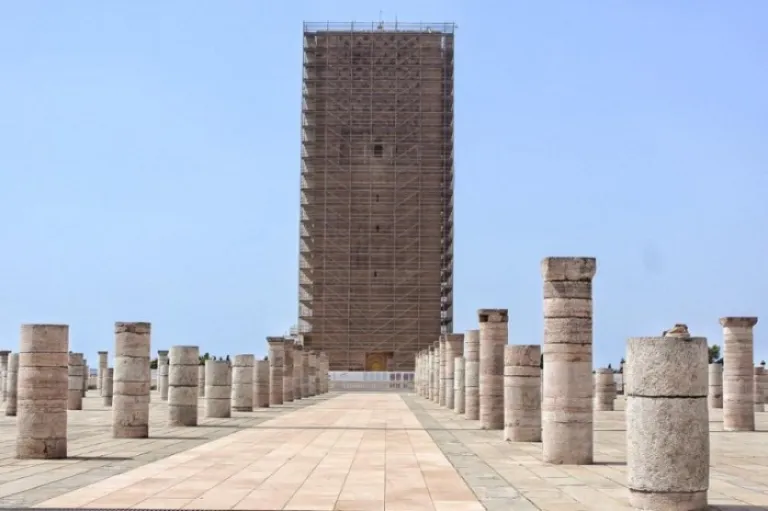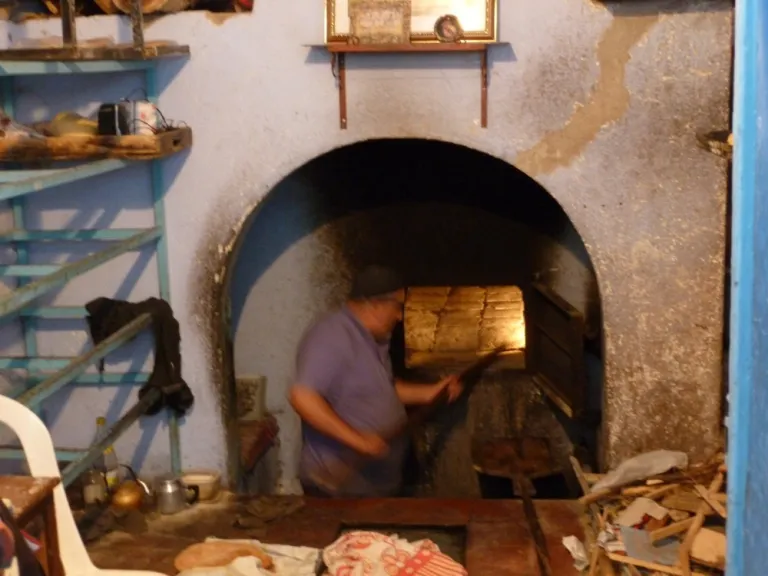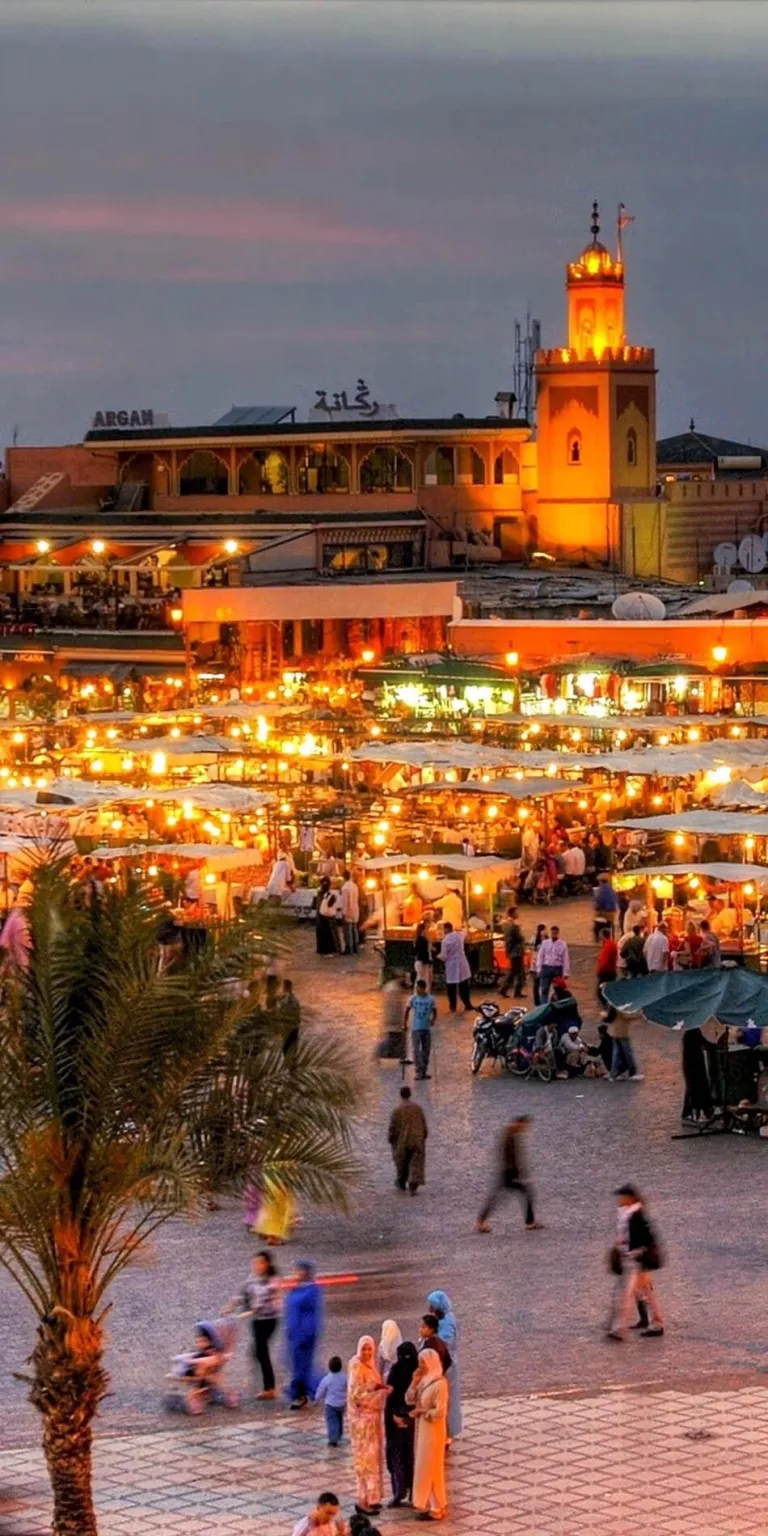Celebrate Christmas and New Year in Japan with this 10-day holiday vacation itinerary packed with Tokyo lights, Kyoto charm, and Osaka adventures.
A Filipino Traveller’s Journey to Morocco: 3-Week Itinerary & Trip Highlights

Contributed by Travelista Journal
Morocco is a diverse and interesting country to discover. Its cobbled narrow streets, medieval medinas, enchanting places, great architectures, souks with spicy scents, colourful Moroccan decor, beautiful beaches and the glorious Sahara desert will really leave a lasting memory of your trip.
Also read: 10 Countries Filipinos Probably Didn’t Know They Can Travel To Without Visa
My husband and I explored Morocco in 3 weeks, and here are the highlights of our trip:
Day 1: Casablanca
Casablanca is the economic capital of Morocco and a home to North Africa’s largest Jewish population, consisting mainly of well-off, middle-class Moroccans.
Things to do
1. Visit the very impressive Hassan II Mosque
 Hassan II Mosque
Hassan II Mosque
Hassan II Mosque is the worlds’ third largest mosque built to commemorate the former king’s 60th birthday. To see the interior of the mosque, you must have a guided tour. Guided tour costs 120 Moroccan Dirham.
 Interior of Hassan II Mosque
Interior of Hassan II Mosque
 Interior of Hassan II Mosque
Interior of Hassan II Mosque
2. Visit the Mausoleum of Mohammed V

The Mausoleum of Mohammed V has the tombs of the Moroccan king Mohammed V and his sons. It is considered as a masterpiece of modern Alaouite dynasty architecture, with its white silhouette topped by a green tiled roof.
 Royal Guard outside the Hassan Tower and Mohammed V Mausoleum
Royal Guard outside the Hassan Tower and Mohammed V Mausoleum
3. Explore the ruins of Hasan Tower

Wander through the ruins of Hasan Tower and discover a part of Moroccan history that will forever remain incomplete. Hasan Tower is an incomplete project of majestic proportions.
4. Roam around Boulevard De Paris

Wander around the streets of Boulevard De Paris in Casablanca to admire the French colonial architecture.
Also read: 7 Off The Beaten Track Destinations in Morocco
Day 2-4: Tangier
Tangier a fascinating city in the Strait of Gibraltar and it’s just twenty miles from the coast of Spain. It is a gateway for many travellers.
Things to do (with guided tour)
1. Pass through the narrow cobbled streets and walls of the medina



2. Explore the souks of Tangier

Explore the souks of Tangier, connect with the local people and experience first-hand tradition of Moroccan buying and selling of a wide range of goods.
3. Walk down the street overlooking the strait of Gibraltar

4. Drive up to Montagne Vielle or California, the most luxurious residential area of Tangier
 The house of Malcolm Forbes, the American publishing tycoon. The movies “The Tourist” of Angelina Jolie and the 15th James Bond were filmed here.
The house of Malcolm Forbes, the American publishing tycoon. The movies “The Tourist” of Angelina Jolie and the 15th James Bond were filmed here.
5. Visit the Rmilat viewing area and Cape Spartel, the northernmost point in Africa
 Cape Spartel, the Northernmost Western point of mainland Africa. The cape rises to a height of 326m at the top of Jebel Quebir where there is a tower.
Cape Spartel, the Northernmost Western point of mainland Africa. The cape rises to a height of 326m at the top of Jebel Quebir where there is a tower.
6. Visit the Cave of Hercules with its most unusual opening, shaped like the map of North Africa

Day 5: Chefchaouen
Chefchaouen is a city in northwest Morocco. It is the chief town of the province of the same name and noted for its building in shades of blue. It is a small gem with a bewitching atmosphere tucked in the Rif Mountains.
Also read: Chefchaouen: The Famed Blue City of Morocco
Things to do
1. Explore the medina of the blue city tucked in the Rif Mountains


2. Visit the communal bakery

The women of Morocco prepare the bread dough at home and take it to the baker to cook.
Day 6: Volubilis / Meknes
Volubilis is a partly excavated Berber and Roman city in Morocco situated near Meknes, between Fes and Rabat, and commonly considered as the ancient capital of the kingdom of Mauritania.
Things to do (with guided tour)
1. Explore the 2000-year-old Roman ruins of Volubilis
 Roman ruins of Volubilis
Roman ruins of Volubilis
 Roman ruins of Volubilis
Roman ruins of Volubilis
Volubilis was a Roman settlement constructed on what was probably a Carthaginian city, dating from 3rd century BC. Volubilis was a central administrative city for this part of Roman Africa, responsible for the grain producing in this fertile region, and exports to Rome. Much of the best excavations have been moved to the Archaeological Museum close to the royal palace in Rabat, but Volubilis offers ruins of quite good quality, and about 30 high-quality mosaics still stand in their original place. There is an admission fee of about 20 Moroccan Dirham.
 Granaries of Meknes
Granaries of Meknes
After lunch from Volubilis, we drove through Meknes to visit the Hri Souani – Granaries of Meknes. This is another great construction of Moulay Ismail in Meknes. It is a complex of three different buildings just to the south of the royal palace. The main structure is the real granaries built to store massive quantities of food and water in case Meknes had been under siege. This amazing place has been used as a scene for many films, the most famous of which is The Last Temptation of Christ in 1988 by Martin Scorsese.
Day 7-9: Fes
Fes is a northeastern Moroccan city often called the country’s cultural capital and is primarily known for its Fes El Bali walled medina, with medieval architecture, vibrant souks and old-world atmosphere.
Things to do
1. Explore the medieval labyrinth medina of Fes


The medieval labyrinth medina of Fes is one of the largest walled cities, and its ramparts and alleys are lined with fresh fruits, mounds, spices, intricately woven Berber carpets and many other Moroccan objects.
2. Visit the stinky tanneries

This is an interesting place to see the leather tanning process in Fes, Morocco, but be very careful, some touts would approach you and lead you to their shop and try to sell multiple leather goods for sky-high prices. There are more bag stalls in the souks or better shop in the Marrakech market but try to haggle over the price.
3. Visit the pottery, the heart of the medina
 Art Naj Ceramics, Fes Morocco
Art Naj Ceramics, Fes Morocco
This is a guided tour where you will see their artists at work and how their porcelain and potteries are all made by hand. I bought some ceramics but again, try to haggle over the price. Their prices are a little high compared to the ones in the souks. Products are shipped to all parts of the world.
Day 10: Middle Atlas
The Middle Atlas is a mountain range in Morocco which is part of the Atlas Mountain range. It can be accessed from Fes or Marrakech.
Things to do
1. Off road riding through the beautiful scenery before descending towards the Sahara Desert
 Herd of sheep
Herd of sheep
 Fantastic off-road riding through beautiful scenery
Fantastic off-road riding through beautiful scenery

Day 11-12: Erfoud & the Sahara Desert

Erfoud is an oasis town in the Sahara Desert.
Things to do in Erfoud before heading to the Sahara
- Explore the small town of Erfoud and Rissani
- Visit the Museum of Fossils and Minerals
- Try the Berber authentic wood-fired pizza in Pizzeria-Restaurant des Dunes
- Visit the Manar Marbre and watch fossilised marble being cut in their showroom

The Sahara is the largest hot desert, and the third largest desert after the Antarctica and the Arctic.
Also read: A Spontaneous Roadtrip to the Sahara Desert in Morocco
Things to do in the Sahara

1. Camel Back Riding
2. Sand Surfing
3. Stargazing
4. Watching the Sunset

Day 13: Todra & Dades Gorges
Todra & Dades Gorges is a scenic, beautiful section of the Dade River valley separating the Atlas Mountain from the Anti Atlas. It is known for its mesmerising scenery and the Kasbah, which is set precariously amongst it overlooking the river below.
Things to do
1. Take a walk around the stunning scenery and amazing views of the gorges

Day 14-15: Quarzazate
Quarzazate is noted for its film-making scene, with Morocco’s biggest studio inviting many international companies to work here. Over the years, Quarzazate has served as a shooting place for Alexander the Great, Black Hawk Dawn, Kingdom of Heaven, Babel, The Mummy (1999), Star Wars (1977), The Living Daylights (1987), Martin Scorsese’s Kundun (1997), and many others, including Ridley Scott’s epic Gladiator (2000), starring Russel Crowe, and Body of Lies (2008) also starring Russel Crowe along with Leonardo DiCaprio.
Things to do
1. Visit the Taourit Kasbah with a guided tour

The Kasbah today is partly ruined but the place has been restored with help from UNESCO. The Kasbah is one of Morocco’s most spectacular historical legacies of wealth and power. With almost 300 rooms and a true maze of passageways, steps, and key lock doors, it’s easy to feel lost within the immense structure that only connects to the outside world through a narrow entrance doorway.
2. Visit the Atlas Film Studios

The Atlas Film Studios wasn’t built until 1983 when Moroccan entrepreneur Mohamed Belghmi recognised the need for a permanent studio in the area. But Quarzazate was first used as a movie scene by acclaimed British director David Lean for his 1962 epic Lawrence of Arabia. Familiar with the area, Lean knew that the site could offer an authentic setting for any ancient, desert-based story.
Day 15-17: Marrakech
Marrakech is a former imperial city in western Morocco. It is a major economic centre and home to mosques, palaces and gardens.
Things to do
1. Take a walk around the beautiful Jardin Majorelle

It took French painter Jacques Majorette (1886-1962) forty years of passion and dedication to create this enchanting garden in the heart of the “Ochre City”.
2. Stroll along Koutobia Mosque located near the Djemaa el Fna
 Koutoubia Mosque in the background
Koutoubia Mosque in the background
The mosque is famous for its magnificent minaret, the oldest of the three great Almohad minarets remaining in the world. The highlight of the Koutoubia mosque, which non-Muslims may not enter, is the beautiful minaret. Rising almost 70m, it dominates the Djemaa el Fna square and can be seen from much of the city.
3. Visit the Djamaa el Fna Square

Djamaa el Fna Square is predominantly occupied by orange juice vendors, water sellers, snake charmers, magicians, and paddlers of traditional medicines. The square is along one side of the Marrakech souk, a traditional North African market catering both for the common daily needs of the locals and for the tourist trade.
4. Visit the Bahia Palace
 Back courtyard of the Bahia Palace
Back courtyard of the Bahia Palace
Built in the late 19th century, Bahia Palace has been regarded as the greatest palace of all time. The name means brilliance. It is intended to capture the essence of the Islāmic and Moroccan style. There is a two-acre garden with rooms opening onto the courtyards.
Day 18-20: Essaouira
Essaouira is a picturesque fishing town lying on the southwest coast of Morocco, with an exquisite beach to the south. Essaouira is one of Morocco’s most popular coastal towns. Many of the countries wood carvers and artists make Essaouira their home.
Things to do
1. Walk along the beach




As you explore the beach, watch the kite surfers, enjoy camel and horseback riding and wait for the stunning sunset of Essaouira.
2. Explore the old Fishing Port
 View from the old Fishing Port
View from the old Fishing Port
 Essaouira, the seagull capital
Essaouira, the seagull capital
In the harbour area, there is an array of seafood restaurants where seafood is freshly cooked for you.
3. Explore the medina

At the medina, shop for souvenirs as gifts for your loved ones back home.
Day 21: Back to Hotel Le Doge
We headed North along the coast of Safi, El Jadida, up to Casablanca and went back to Hotel Le Doge.
Day 22: Transfer to the airport
If and when we will definitely go back to Morocco in a heartbeat!
Published at
About Author
Tess Buison
Subscribe our Newsletter
Get our weekly tips and travel news!
Recommended Articles
10-day Christmas and New Year Japan Trip: Complete Travel Itinerary My 10-Day Southern Vietnam Backpacking Trip for Less Than ₱15k 10 days in Southern Vietnam with less than ₱15k budget. Learn how this Filipina did it!
10 Family Outing Ideas in Metro Manila Under ₱500 Looking for a weekend bonding with the family under ₱500? Head to these places, pronto!
10 Things to Do in Clark for Your Next Weekend Getaway The ideal weekend destination for every traveller.
10 Tips for Planning Out-of-Town Trips During Typhoon Season Stay safe and travel well during the rainy season.
Latest Articles
PAL’s New ‘Safetynovela’ Goes Viral as Netizens Praise Creative Twist on Flight Safety Video Pre-flight briefings are made fun again!
E-bikes, E-trikes Ban in Metro Manila Starts Jan. 2 with Mandatory Impounding Full list of prohibited routes and what you need to do to keep your e-trike.
6 Filipino Foods to Eat During New Year's Eve for Better Luck and Wealth in 2026 Lucky Filipino foods you need for a prosperous Year of the Fire Horse!
FREE NYE 2026 Countdown & Firework Shows in the Philippines Don't waste ₱17k on hotel tickets! Catch SB19, Bamboo, and Ely Buendia for FREE.
New US Biometric Rule Filipino Travellers Must Know Mandatory border photo checks

